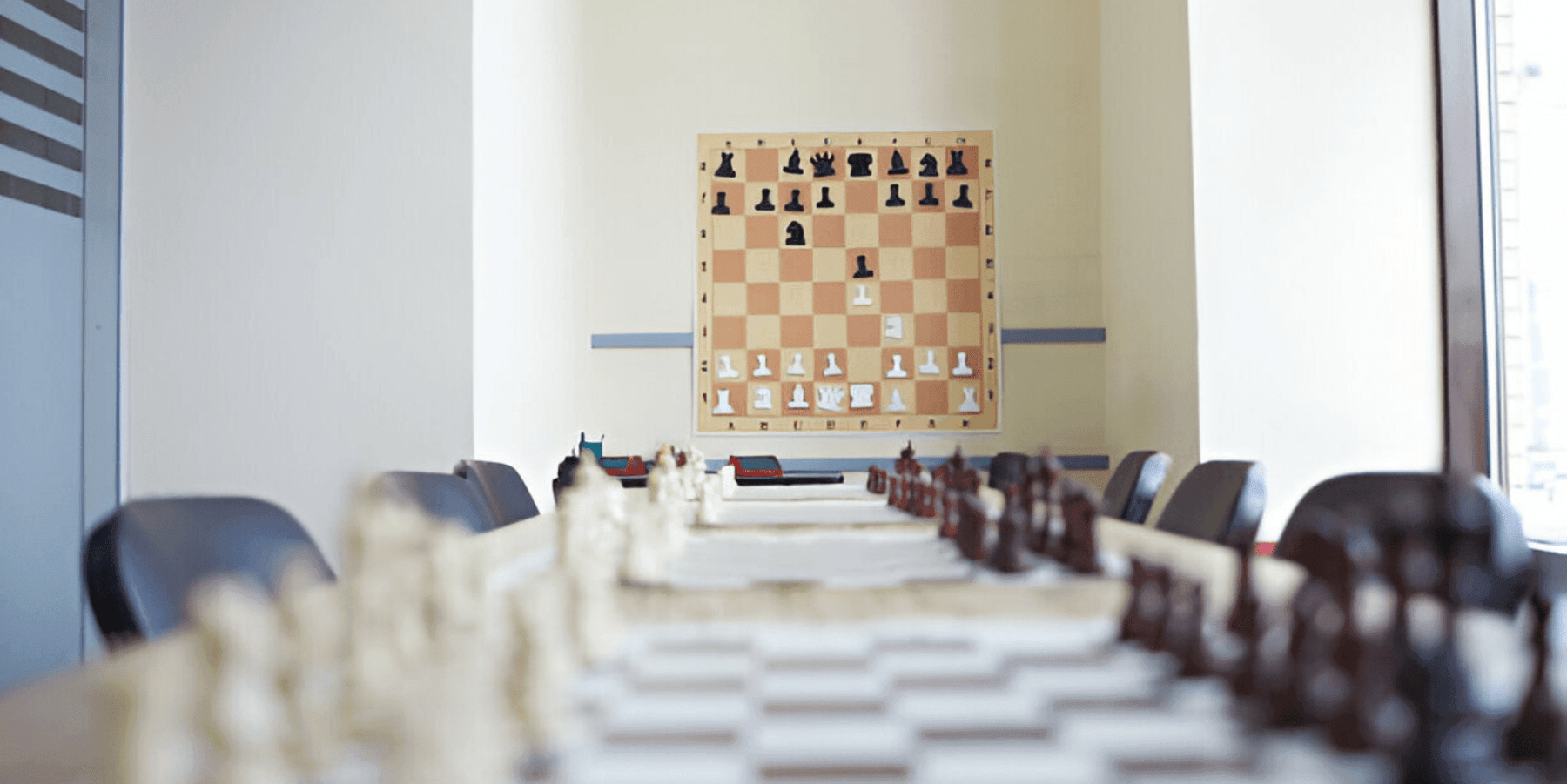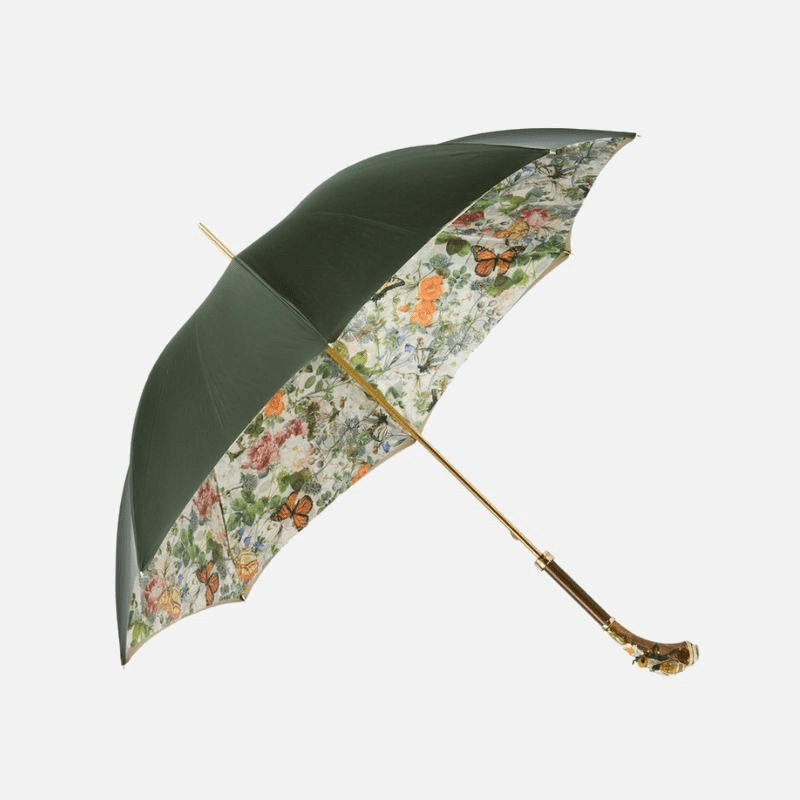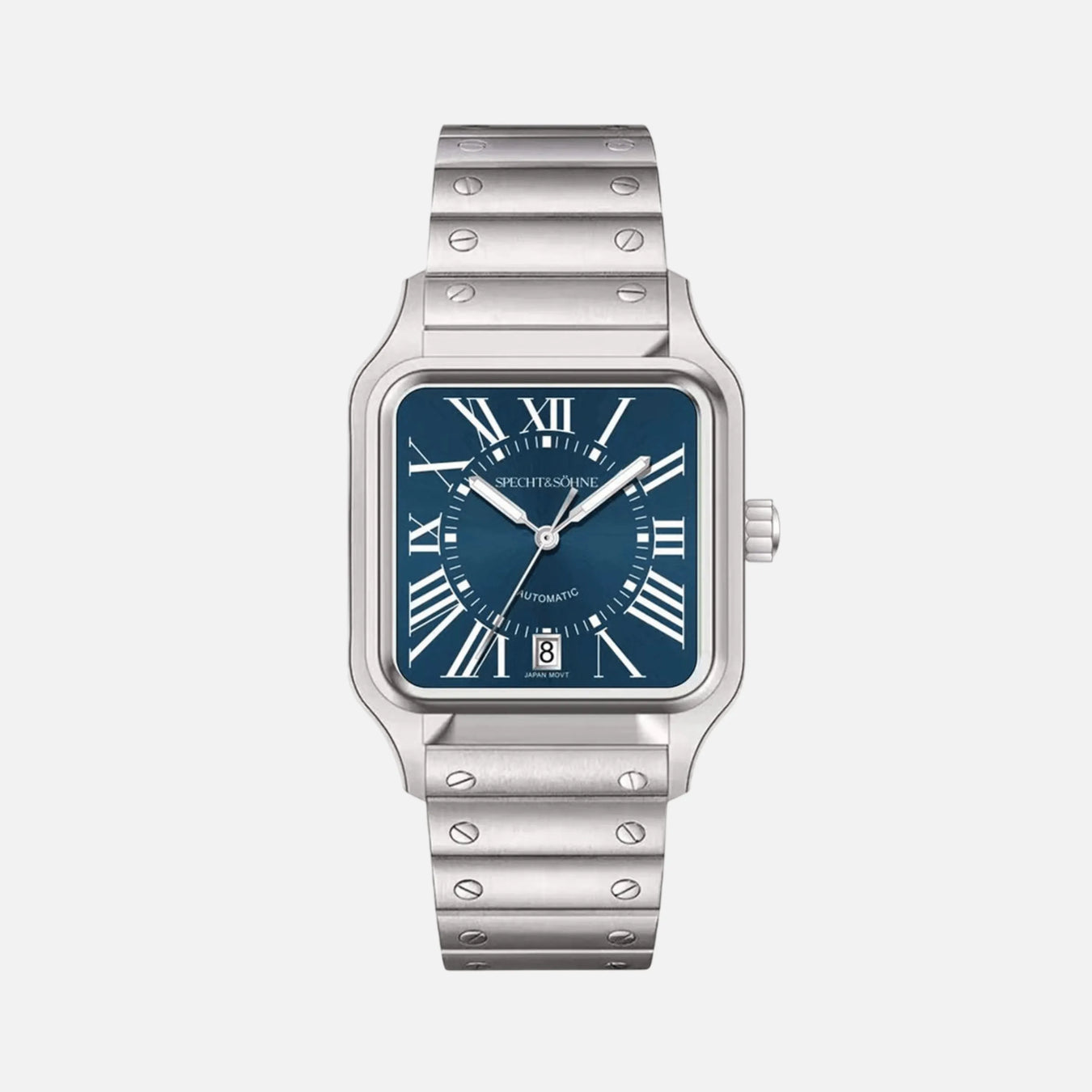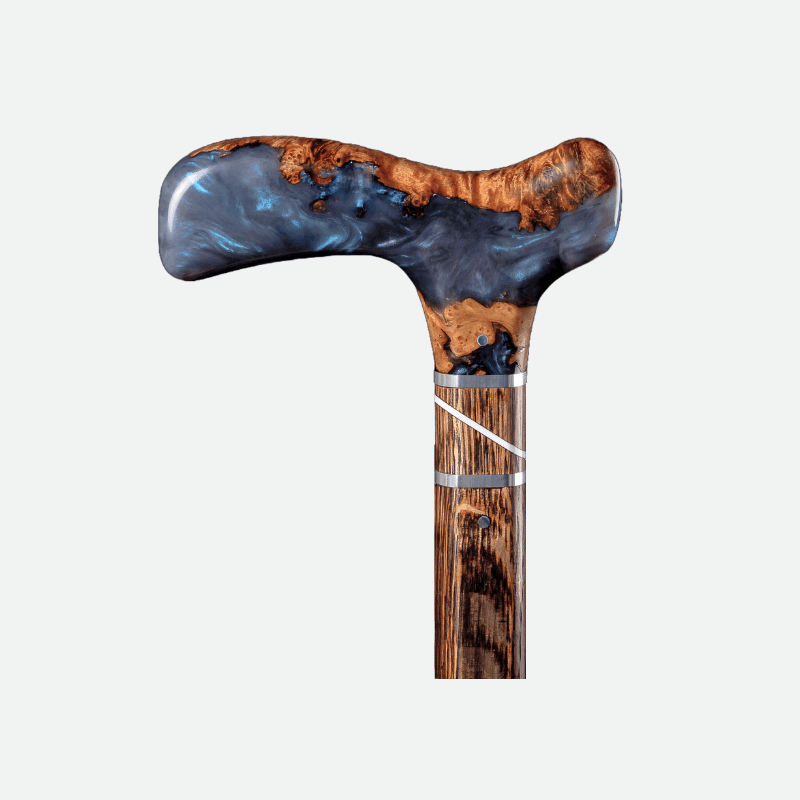
Bringing Chess to the Classroom: The Untapped Educational Benefits for Students
Introduction to Chess as an Educational Tool
Chess, a game thought to have originated over a millennium ago, has long been more than a simple pastime. Represented by a set of wooden chess pieces artfully crafted, it stands as a symbol of strategy, intellect, and patience. Over the years, educators and psychologists have come to appreciate the profound educational benefits that this ancient game can provide to students across various age groups and learning environments.
From the moment students lay their hands on a set of large wooden chess pieces, they are not only preparing for a game but also for an educational journey. Luxury chess pieces, often intricately designed, give the game a tactile richness that can enhance the cognitive experience. For a child, receiving beautiful chess pieces as a gift for dad or as part of an educational toolkit can bridge the gap between leisure and learning.
The connection between playing chess and educational growth is supported by a body of research highlighting multiple cognitive and social benefits, including:
- Improved problem-solving skills
- Enhancement of memory abilities
- Development of strategic thinking
- Increased attention span and focus
- Better planning and foresight
By incorporating chess into the classroom, educators leverage a tool that both captivates and challenges the young mind. The myriad benefits extend beyond the chess board, impacting students’ academic performance and social interaction. Understanding chess as an educational tool entails recognizing it as a supplement to traditional learning methods, and as a valuable asset in the holistic development of students’ intellectual capabilities.
Historical Context of Chess in Education
Chess has a storied history as an educational tool, its legacy stretching back centuries. Originating in India and spreading to Persia, the game of chess reached European shores by the 9th century. It was embraced by the nobility and intellectuals, eventually earning the moniker, ‘The Game of Kings.’ Despite its royal associations, chess was more than a pastime; it was a reflection of battlefield strategies and a method to sharpen the mind.
During the Middle Ages and the Renaissance, chess became integral to the education of the elite. Its emphasis on critical thinking, patience, and foresight aligned neatly with the scholarly curriculum of the era. It was believed that the skills gleaned from the game could transfer to more grandiose arenas, such as politics and warfare.
In the 19th and early 20th centuries, a set of wooden chess pieces was commonly found in European households, schools, and universities. A set of large wooden chess pieces, often seen as luxury chess pieces, signified a form of intellectual status symbol. Chess was not only a game but also a teaching aid, fostering strategic thinking and problem-solving abilities.
By the 1950s, the Soviet Union recognized the strategic advantage of chess and incorporated it into their educational system. Soviet students engaged with beautiful chess pieces not merely for enjoyment but as a gift for developing cognitive skills. This initiative demonstrated a profound respect for the game’s capacity to build critical intellectual abilities.
The impact of chess in education continues today, with studies demonstrating how teaching chess to children can improve their mathematical abilities, memory, and even creativity. Chess sets, ranging from basic designs to intricate art 809125 or the perfect “gift for dad” collections, adorn classrooms around the globe, symbolizing the enduring educational benefits that chess has to offer. Through pawn and knight, bishop and queen, students across time have been, and continue to be, educated in the art of strategy and foresight—a testament to chess’s undiminished value in intellect-building across time.
Cognitive Advancements through Chess

Chess, often seen as a game steeped in intellectual tradition, goes beyond mere recreation. Bringing chess to the classroom harnesses its potential as an effective tool for cognitive development. Incorporating a set of wooden chess pieces artfully crafted, particularly those like the set 809125, can transform an ordinary classroom into a dynamic environment for learning and cognitive growth. The game is intricately linked to the enhancement of students’ mental faculties in several compelling ways.
- Problem-solving Skills: Chess facilitates the growth of problem-solving skills. As students navigate the complexities of the game, they learn to foresee consequences, consider alternatives, and make strategic decisions.
- Spatial Reasoning: The maneuvering of large wooden chess pieces across the board allows for the development of spatial reasoning, an invaluable skill in fields such as mathematics, engineering, and the arts.
- Concentration and Focus: Chess requires a high level of concentration and sustained focus. Students develop the ability to pay attention for longer periods, an asset in all areas of academic study.
- Memory Improvement: Memorizing chess moves and positions can lead to an overall improvement in memory, as the game challenges players to recall past game patterns and opponent strategies.
- Logical Thinking: Chess promotes logical and systematic thinking. Students learn to evaluate the ramifications of their actions in a controlled setting, reinforcing the logical processing of information.
- Creativity and Imagination: Despite chess’s stringent ruleset, there is vast scope for creativity. Students are encouraged to think imaginatively when crafting strategies, thus fostering creative thinking skills.
Integrating chess into the curriculum, utilizing luxury chess pieces as a beautiful chess gift for the mind rather than just as a gift for dad, can provide an enriching and visually stimulating learning experience. The cognitive benefits are clear, making chess an untapped educational resource poised to make significant contributions to a student’s academic journey.
Chess and Problem-Solving Skills Enhancement

Chess is often celebrated for its intellectual rigor and the strategic prowess it demands from players. Integrating chess into the academic curriculum can substantially enhance a student’s problem-solving skills, a benefit that extends far beyond the confines of the 64-square board.
When students are presented with a set of wooden chess pieces, they aren’t merely being introduced to the art of the game; they are engaging with a complex system of decision-making. Each move on the chessboard requires a player to anticipate potential challenges and devise strategies to overcome them. This mimics real-world problem-solving, where decisions must be made with both short-term and long-term outcomes in mind.
Incorporating chess into teaching methodologies may transform the traditional classroom environment. Utilizing a set of large wooden chess pieces can become a dynamic educational tool, invoking critical thinking and tactical planning. Luxury chess pieces add to the allure, making the learning experience not only intellectually stimulating but aesthetically pleasing as well.
Moreover, chess teaches students to recognize patterns, a skill that is transferable to numerous academic disciplines such as mathematics, science, and technology. It also encourages looking at problems from different perspectives - a quality crucial for innovation and creativity.
As students progress, they learn to make more sophisticated and calculated decisions, reflecting the careful planning of a gift for dad who enjoys the thoughtful artistry of a well-played game. Hence, chess serves not only as a tool for cognitive enhancement but also as an embodiment of the beauty and complexity inherent in problem-solving.
In essence, by introducing the nuanced strategies of chess to students, educators are equipping them with a mental toolkit that fosters remarkable problem-solving abilities invaluable in both academic and everyday contexts.
Emotional Intelligence and Psychological Benefits
Incorporating chess into the school curriculum extends beyond academic advancement; it fosters the development of emotional intelligence among students. Chess, characterized by its strategic nature, encourages learners to recognize and respect the perspective of their opponents. Players must anticipate and empathize with the other player’s plans, enhancing their ability to understand emotions.
The art of patiently waiting for one’s turn in chess cultivates self-regulation and emotional control. Students learn the importance of composure, even in high-stakes situations, which serves them in various life scenarios. Moreover, the intricate designs and tactile pleasure of handling a set of large wooden chess pieces can be a soothing experience.
Facing both victories and defeats in games, participants develop resilience. The psychological growth is evident as students learn to process setbacks constructively, reflecting the resilience required to navigate life’s numerous challenges.
Engaging with luxury chess pieces or a beautifully crafted set of wooden chess pieces, art enthusiasts and beginners alike are likely to experience a boost in self-esteem. The physical presence of exquisite pieces accentuates the mental and emotional engagement of the game, making it a profound gift for young minds reminiscent of a luxury gift for dad.
Here are several key psychological benefits of bringing chess to the classroom:
- Insight into one’s emotional responses and enhancement of emotional literacy
- Improved patience and emotional control, crucial for stress management
- The development of resilience through exposure to defeats and the determination to improve
- An increase in self-esteem as a result from the mastery of a sophisticated skill
Chess thus holds significance not merely as a cerebral pursuit but as a medium through which essential emotional and psychological skills are honed for students’ overall well-being.
Chess as a Medium for Improving Concentration and Patience
The strategic game of chess is highly regarded for its ability to enhance mental faculties. It requires players to exercise concentration, as they must maintain focus on both their own strategies and anticipate their opponent’s moves. Introducing chess to the classroom setting can significantly enhance students’ ability to concentrate. As pupils engage with a set of wooden chess pieces, art 809125 merely constitutes the starting point of an intricate cognitive exercise.
-
Deepening Concentration: Chess demands players’ attention for extended periods. Each move is a silent test of a student’s ability to focus amidst potential distractions, cementing deeper levels of concentration.
-
Encouraging Strategic Thinking: With every game, learners encounter a virtual battlefield where foresight is indispensable. Plan-making and visualization skills are honed as students learn to look several moves ahead—developing patience and an appreciation for delayed gratification.
-
Promoting Patience: Unlike many fast-paced games today, chess teaches the virtue of patience. Strategic planning takes time, and students learn that impulsive moves often lead to swift defeat. Meanwhile, they discover the benefits of taking slow, thoughtful actions.
-
Enhancing Discipline: A set of large wooden chess pieces, luxury chess pieces, or even a beautifully crafted gift for dad, not only serve as mnemonic devices offering joy but also symbolize the discipline required to resist the temptation of immediate, less-strategic moves.
Chess’s unique blend of requiring concentrated thought and tempered pacing makes it an unparalleled tool for teaching and reinforcing these qualities in students. When practiced consistently, the game cultivates a mental acuity conducive to academic pursuits and beyond, illustrating the profound impact of integrating chess into educational curriculum.
Integrating Chess into the Curriculum: Methodologies and Models
Educators and curriculum designers are increasingly acknowledging the multifaceted benefits of chess as an educational tool. To incorporate chess into school programs effectively, certain methodologies and models must be employed to align with educational standards and objectives.
Project-Based Learning (PBL)
One methodology that has shown promise is Project-Based Learning (PBL). Within PBL frameworks, students engage with chess not only as a game but also as a context for exploring mathematics, critical thinking, and even history, addressing a set of wooden chess pieces art 809125 as a case study.
Cross-Curricular Approach
A cross-curricular approach can intertwine chess with various subjects. For instance, language arts classes can utilize the narratives of historic chess matches to enhance reading and comprehension skills, while science classes may explore physics principles through the motion of luxury chess pieces.
Gifted and Talented Programs
Chess is an ideal activity for gifted and talented programs. Trainers could use a set of large wooden chess pieces to illustrate complex strategies, enhancing spatial reasoning and problem-solving abilities among these students.
After-School Clubs and Enrichment
After-school clubs present a less formal but equally valuable setting for integrating chess into student life. Here, beautiful chess pieces can serve as engaging teaching aids, igniting student interest and fostering a lifelong love for the game.
Family Engagement
Schools might also consider family-oriented events, where chess serves as a bonding tool. A gift for Dad, such as a chess set, could become the centerpiece for teaching intergenerational players, thereby extending the educational benefits beyond the classroom.
All aforementioned methodologies require educators to undergo specific training to harness the full potential of chess as an educational instrument. Moreover, assessment models must be developed to quantitatively measure the impact of chess on educational outcomes, ensuring its continued relevance and efficacy in modern pedagogy.
Case Studies: Success Stories of Chess in the Classroom
Over the years, integrating chess into educational curricula has proven to bolster cognitive skills, enhance academic performance, and nurture life competencies among students. Here are some notable case studies that speak to the success stories of chess in the classroom.
-
New York City Schools Chess Program: In an initiative led by a non-profit organization, New York City public schools witnessed a significant improvement in reading and math scores among students participating in chess programs. Not only did chess provide a dynamic environment for problem-solving and critical thinking, but it also fostered a sense of accomplishment and improved school attendance rates.
-
Alabama Chess in Schools (ACIS) Initiative: The state of Alabama launched the ACIS program with an aim to improve educational outcomes through chess. Research indicated that students who took part in the chess curriculum demonstrated enhanced math problem-solving skills and better concentration, translating into a broader academic performance improvement.
-
The Armenian Chess Story: Armenia stands out for making chess a mandatory part of its national curriculum. Studies from Armenian schools show that chess has helped in developing children’s analytical capabilities and decision-making skills. Moreover, it has fostered a culture of intellectual growth and strategic thinking across Armenian society.
-
Istanbul, Turkey – The Fatih Project: A project in Istanbul that integrated chess into the curriculum reported significant improvements in memory, attention span, and spatial-reasoning abilities among students. Teachers also noticed a drop in classroom behavior issues, attributing it to the discipline and patience learned from chess.
Each of these stories showcases how a set of wooden chess pieces, artfully placed on a board, moves beyond a game and becomes an educational tool. Whether it’s the large wooden chess pieces in a tournament-style setting, luxury chess pieces that engage students’ sense of aesthetics, or just a beautiful chess set received as a gift for dad that makes its way into a classroom, the impact of chess on the educational journey of students is profound. Through these case studies, educators worldwide are recognizing the untapped benefits of bringing chess to the classroom.
The Social Aspect: Promoting Inclusivity and Collaboration
Introducing chess into the educational sphere has the potential to transcend mere cognitive enhancement, fostering a culture of inclusivity and collaboration that is vital for holistic student development. When students engage with a set of wooden chess pieces, they are not solely focusing on strategy and skill; they are participating in a historical game that breaks down social and cultural barriers.
Chess’ universal appeal makes it a perfect medium for promoting inclusivity within the classroom. Its intricate, strategic nature requires no prerequisite knowledge of language or mathematics, enabling students from diverse backgrounds to compete on equal footing. The beauty of playing with a set of large wooden chess pieces is that they can become a shared language among pupils, allowing individuals who might struggle with traditional communication to express themselves and interact with their peers.
The collaborative benefits of chess are equally significant. While the game is traditionally seen as a competitive endeavor, its introduction into the classroom often transforms it into a cooperative experience. Students are encouraged to discuss strategies and learn from one another’s playstyles. Luxury chess pieces can evoke a sense of pride and respect for the game, driving students to work together and appreciate the contributions of their classmates.
Integration of chess as an educational tool can also act as a gift for dad or any facilitator looking to bond with students through shared learning. A carefully curated set of beautiful chess pieces not only serves as an instrument for teaching life skills but also as a centerpiece that brings students together for friendly competition and mutual growth.
- Chess promotes a non-discriminatory environment where every student, regardless of background, has the opportunity to excel.
- Collaborative activities stem from chess play, teaching students the value of teamwork and shared success.
- The game acts as a conduit for communication, especially for those who find verbal interaction challenging.
- Chess incites respect towards opponents and fosters a community atmosphere where individual achievements are celebrated as collective victories.
Incorporating chess in schools thus encompasses more than educational benefits—it sews the seeds of a more inclusive, cooperative society.
Assessment and Measuring Impact: How to Evaluate Chess Programs
Evaluating the efficacy of chess programs in educational settings involves a multifaceted approach. Educators and program coordinators must establish metrics that measure the cognitive, social, and emotional growth of students participating in chess activities.
-
Baseline Evaluation: Prior to the introduction of a chess program, assess students’ initial chess skills, critical thinking abilities, and academic performance. This provides a benchmark against which future progress can be compared.
-
Ongoing Monitoring: Implement systematic monitoring of students’ progress in chess, noting improvements in strategy, problem-solving, and concentration. Regular observations and feedback sessions are essential to gauge student engagement and enthusiasm for the game.
-
Academic Correlation: Track any correlations between chess participation and academic outcomes. Research indicates chess can improve mathematics, reading comprehension, and overall academic performance. Therefore, monitor students’ grades and achievement in these areas.
-
Social and Emotional Development: Chess programs can also affect non-academic domains. Observe changes in social interactions, patience, emotional regulation, and self-esteem. Surveys and interviews can provide insights into these areas.
-
Curriculum Integration: Investigate how well the chess program integrates with the existing curriculum. Assess whether it complements educational objectives and enriches the learning environment.
-
Feedback from Stakeholders: Collect feedback from students, teachers, parents, and administrators. Their perspectives can provide valuable qualitative data about the program’s impact on the student body and school culture.
By employing these evaluation techniques, educators can ensure that they are not merely adding a set of wooden chess pieces to the classroom but are providing an enriching educational tool that comprehensively benefits students. A set of large wooden chess pieces, luxury chess pieces, or beautiful chess pieces can serve as a visual and tactile stimulus, potentially enhancing the learning experience. Moreover, as a gift for dad or another family member, such a chess set can extend the educational benefits into the home, promoting intergenerational engagement with the game.
Challenges of Implementing Chess in Schools and Overcoming Them
Incorporating chess into educational curricula may face several challenges, but with strategic approaches, these can be turned into opportunities for development and learning.
One major roadblock is the lack of resources. Schools often operate on tight budgets, and allocating funds for a set of large wooden chess pieces or luxury chess pieces might not be feasible. To overcome this, educators can seek sponsorships from local businesses, apply for educational grants, or invest in a set of wooden chess pieces art 809125 that are more cost-effective.
Another issue is the possible lack of knowledgeable staff. Not every teacher is equipped with the skills to teach chess or understand its educational benefits. To address this, schools could provide professional development opportunities or partner with chess clubs and experts who can offer their experience and guidance.
Resistance to change is a common challenge in educational settings. Traditional teaching methods are deeply ingrained, and some educators may view chess as a distraction rather than an educational tool. Building awareness of the cognitive and social benefits of chess can help. Additionally, showcasing successful case studies where chess has been effectively integrated into a curriculum can be convincing.
Time constraints within the school day also present a hurdle. Fitting chess instruction into an already packed schedule requires creativity. Strategies might include introducing chess as an after-school program, integrating it into math or critical thinking lessons, or using it as a rewarding activity for finished assignments.
Lastly, ensuring that chess is accessible to all students is vital. Exclusive reliance on beautiful chess pieces gift for dad sets that are too expensive can create disparities. Prioritizing the acquisition of sets that are both appealing and affordable can promote inclusivity, ensuring that all students have the opportunity to engage with the game and its benefits.
Physiological Effects: The Brain on Chess

When a set of wooden chess pieces is arranged before students, the cerebral symphony begins. Engaging in chess prompts a significant increase in the complexity of dendritic networks in the brain. As students plan strategies and anticipate opponents’ moves, neural pathways are forged and strengthened. This burgeoning neural activity mirrors the delicate artistry of a beautifully carved set of large wooden chess pieces, each move contributing to an ever-evolving cognitive masterpiece.
The prefrontal cortex, crucial for decision-making and planning, is particularly stimulated during a game of chess. As students consider the implications of moving a luxury chess piece, they exercise foresight and impulse control, crucial skills that extend far beyond the classroom setting. The hippocampus, the brain’s center for memory retention, also becomes active. As players remember past games and opponents’ techniques, they not only recall but also learn to recognize patterns, enhancing their ability to strategize.
Moreover, the game’s need for problem-solving and critical thinking leads to enhanced cognitive development. Stress management is another benefit; chess requires maintaining focus and composure even under pressure, a mental exercise in emotional control. This parallels the nuanced gift for dad, teaching patience and determination.
Neurotransmitters like dopamine and serotonin are released during chess play, which contribute to mood regulation and motivation, thereby increasing student engagement and satisfaction. In dealing with the complexity of the game, akin to handling a set of intricate, beautiful chess pieces, students face intellectual challenges that foster creative and innovative thinking.
Students’ brains, when engaged in chess, lighting up like a grand canvas — each thought, each move, a stroke of genius. The educational system holds within its grasp a powerful tool that could reshape cognitive development — all resting on the unassuming wooden board of chess.
Resources and Tools for Teachers to Incorporate Chess

When introducing the strategic game of chess into the educational environment, educators can utilize a plethora of resources and tools designed to make the integration process seamless and engaging for students. Here are some recommended resources:
-
Chess Sets: Start with a set of wooden chess pieces (art 809125) for classroom use. These pieces are not only functional but also aesthetically pleasing, which can enhance the learning experience. For special occasions or school clubs, consider a set of large wooden chess pieces or luxury chess pieces, which can serve as a beautiful chess set and a potential gift for dad or mentor involved in the program.
-
Online Platforms: Websites like Chess.com or Lichess offer a comprehensive and user-friendly environment where students can play, learn, and compete with peers from around the world.
-
Curriculum Guides: Numerous educational curriculums are available specifically tailored for teaching chess. These often include lesson plans, activities, and assessments to gauge student progress.
-
Chess Puzzles and Exercises: Incorporating chess puzzles into the lesson can help strengthen problem-solving and critical thinking skills. These can be found in various chess books or educational websites.
-
Chess Software: Software such as Fritz or ChessBase can be used for in-depth analysis, allowing students to study games and understand strategic concepts.
-
Chess Clubs and Tournaments: Facilitating a chess club or organizing school tournaments can give students a platform to practice competitively, fostering a deeper understanding and appreciation for the game.
-
Chess Scholarships: Informing students about scholarships for chess players can motivate them to take the game seriously and strive for excellence, both academically and on the chessboard.
By utilizing these resources, teachers can ensure that chess serves as a dynamic educational tool that not only teaches the game but also enriches the students’ overall learning experience.
Future of Chess in Education: Trends and Innovations
The landscape of educational chess is shifting, heralding an era where the strategic game transcends traditional boundaries and becomes a standard tool for cognitive development in schools. As educators recognize the multifaceted benefits of chess, they are incorporating it into curricula with innovative approaches that engage students of all ages.
Trends show that technology is playing a significant role in the future of chess in education. Online platforms now offer interactive lessons, allowing students to learn chess strategies and hone their skills at any time and from any place. Additionally, these platforms use analytics to tailor the learning experience to each student’s strengths and weaknesses, ensuring personalized progress.
Another innovation is the combination of chess instruction with other educational materials. For instance, lesson plans are being designed to integrate chess with mathematics, critical thinking exercises, and even history, showcasing the game’s role in various cultures.
In terms of physical equipment, there is a rise in the popularity of a set of large wooden chess pieces and luxury chess pieces, which not only enhance the tactile experience but also add an aesthetic value to the learning environment. Schools are unveiling beautiful chess pieces—a gift for dad and children alike—that serve to draw more interest to the game.
The use of chess as a pedagogical tool is also extending beyond the classroom. After-school programs, weekend workshops, and chess camps are becoming more common, providing students with additional opportunities to practice and compete.
Furthermore, educators are pursuing professional development in chess education, which is essential for ensuring that the benefits of chess are maximized within the academic setting. By receiving proper training, teachers can integrate chess more effectively into their teaching methods, creating an immersive and impactful learning experience.
In conclusion, as these trends and innovations gain traction, chess is set to become an indispensable component of modern education, offering a dynamic and enriching complement to traditional teaching methods.
Conclusion: Summarizing the Multifaceted Benefits of Chess in Education
Chess, a timeworn game embodying both art and science, has weaved its way into educational discourse, revealing its untapped potential as a pedagogical tool. Integrating chess into the classroom is not merely about teaching the game’s rules or promoting competitive play. It is an enriching experience that transcends the 64 squares of the chessboard.
In adopting chess as an educational instrument, schools pave the way for myriad benefits. Chess has been shown to bolster concentration, patience, and perseverance among learners. As a cerebral sport, it encourages strategic thinking and foresight, helping students to anticipate consequences and consider multiple outcomes before taking action.
Moreover, it fosters the development of problem-solving skills. Chess presents complex challenges that require creative solutions, thus honing a child’s ability to navigate intricate situations – a skill applicable across various academic subjects and real-life scenarios.
Chess also contributes to mathematical understanding. The geometry of the chessboard, the calculation of potential moves, and the arithmetic of piece values intertwine seamlessly with mathematical concepts, strengthening a student’s numeracy.
Socially, chess serves as a bridge between diverse groups, promoting inclusivity and collaboration. By engaging in this game, students learn respect for opponents, sportsmanship, and the value of constructive feedback.
In light of these educational advantages, the merits of integrating chess into school curricula are indisputable. Whether it is a set of wooden chess pieces art 809125, a set of large wooden chess pieces, luxury chess pieces, beautiful chess pieces, or a particularly designed ‘gift for dad’, each set has the potential to be more than a passive object of leisure – it can be a dynamic educational resource. Chess, thus, is a worthy addition to the education of youth, offering a unique and effective means to equip them with essential life skills.






